31 Aug How To Find The Right Workers’ Comp Third Party Administrator
Choosing a workers’ compensation third party administrator is an important decision. It is complex work, but a good administrator can promote efficiency and streamline workers’ compensation costs. A poor one can bog down the process, gobble up time unnecessarily, and increase risk.
If you’re searching for the right third-party administrator to manage claims, the organization must address your company’s risk management goals, corporate needs, and culture. The chosen TPA can impact your bottom line and increase reputational risk if they mishandle claims.
Here are several factors to consider while searching for a TPA that fits your needs.
General Considerations
When considering potential TPAs, ensure they meet or exceed in these areas:
- They have solid references and can handle your largest areas of exposure within the company.
- They’re experts in your organization’s jurisdiction(s) and well-versed in the area’s rules and requirements.
- They have SSAE audit certifications and protocols to identify and address risks, including a disaster recovery plan.
- They have a seamless, fully-integrated system to direct claims to the correct people quickly and control claim costs.
- They use a claims management information system (CMIS) and a risk management information system (RMIS) to provide you with analytical data and reports.
- They have a 24/7 customer support call center to handle inquiries quickly and efficiently.
- They have low pending claims levels and low new claims assignments. A good question to ask your TPA: Do each of your adjustors have less than 25 open indemnity claims and less than 60 medical claims? If not, Gilbert’s might be able to help!
Industry Expertise
Even though many workers’ compensation claims have similarities, many differences also exist between industries. Industry expertise is often critical for optimal outcomes. Review these aspects of the TPA to determine whether they’re an appropriate fit:
- They service other organizations within your industry and understand the specific claim types and strategies to address them properly.
- They belong to the appropriate risk management association for your sector, such as PRIMA, ASHRM, and URMIA.
- They meet or exceed the industry average for client claims and they’re improving over time. Ask for concrete data. Is your TPA able to resolve 82% of all claims in less than 90 days? Do only 3% of their claims end in litigation, despite the industry average being 10%? If the answer is no, Gilbert’s may have some options to help you improve!
Managed Care
Medical and pharmacy costs account for almost 60 percent of workers’ compensation expenses. A good TPA can reduce your costs and ensure that your workers return to work quickly. Here are a few considerations when reviewing potential TPAs:
- They balance prevention and managed care through reviews, intervention programs, and technological services.
- They have a comprehensive pharmacy benefits management (PBM) to reduce pharmacy costs.
Technology
Protecting data, providing usable reports, training end users, and providing analytics are important roles for a potential TPA. Look for these characteristics:
- They use procedural and technical measures to prevent unauthorized access, modification, use, and distribution of sensitive personal health and personally identifiable information.
- They prevent deliberate denials of service.
- They protect their system from physical harm.
- Their claims systems and RMIS can fulfill your organizational reporting needs.
- They provide comprehensive initial and ongoing training to end users at a reasonable cost, either through defined training periods or on-demand.
- Their RMIS provides analytics to help you prevent future losses. Do they provide data to help you make informed decisions, train department heads, and reduce unsafe behaviors?
Risk Management
Most TPAs can handle claims, but not all manage risk. A good TPA not only mitigates claims costs, but also strives to reduce future claims and improve outcomes. Here are a few risk management considerations when choosing a TPA:
- They analyze data to identify risks and take steps to prevent them from reoccurring.
- They have a multi-tiered system in place to reduce claim length and costs and see them through to resolution.
- They have a quality assurance program to follow up on losses and understand what they can do better.
The third-party claims administrators here at Gilbert’s Risk Solutions will take the headache out of the process and control your costs. We partner with you to identify and mitigate risks, employ best practices in claims administration, and work towards optimal resolution for every claim. We help businesses across the country manage their risk and we can help you, too. Contact us for a free consultation.


No Comments